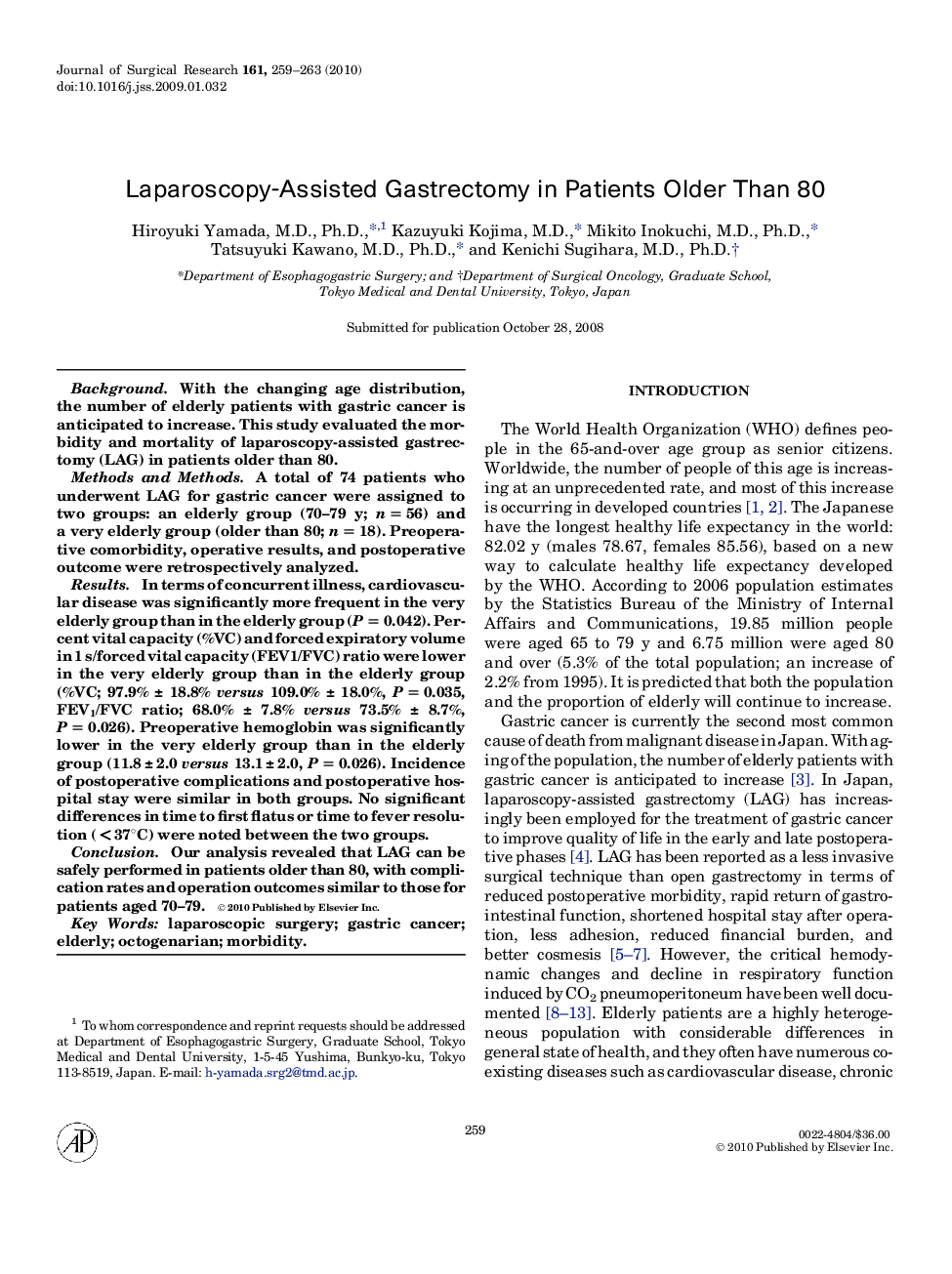| کد مقاله | کد نشریه | سال انتشار | مقاله انگلیسی | نسخه تمام متن |
|---|---|---|---|---|
| 4302870 | 1288465 | 2010 | 5 صفحه PDF | دانلود رایگان |

BackgroundWith the changing age distribution, the number of elderly patients with gastric cancer is anticipated to increase. This study evaluated the morbidity and mortality of laparoscopy-assisted gastrectomy (LAG) in patients older than 80.Methods and MethodsA total of 74 patients who underwent LAG for gastric cancer were assigned to two groups: an elderly group (70–79 y; n = 56) and a very elderly group (older than 80; n = 18). Preoperative comorbidity, operative results, and postoperative outcome were retrospectively analyzed.ResultsIn terms of concurrent illness, cardiovascular disease was significantly more frequent in the very elderly group than in the elderly group (P = 0.042). Percent vital capacity (%VC) and forced expiratory volume in 1 s/forced vital capacity (FEV1/FVC) ratio were lower in the very elderly group than in the elderly group (%VC; 97.9% ± 18.8% versus 109.0% ± 18.0%, P = 0.035, FEV1/FVC ratio; 68.0% ± 7.8% versus 73.5% ± 8.7%, P = 0.026). Preoperative hemoglobin was significantly lower in the very elderly group than in the elderly group (11.8 ± 2.0 versus 13.1 ± 2.0, P = 0.026). Incidence of postoperative complications and postoperative hospital stay were similar in both groups. No significant differences in time to first flatus or time to fever resolution (<37°C) were noted between the two groups.ConclusionOur analysis revealed that LAG can be safely performed in patients older than 80, with complication rates and operation outcomes similar to those for patients aged 70–79.
Journal: Journal of Surgical Research - Volume 161, Issue 2, 15 June 2010, Pages 259–263